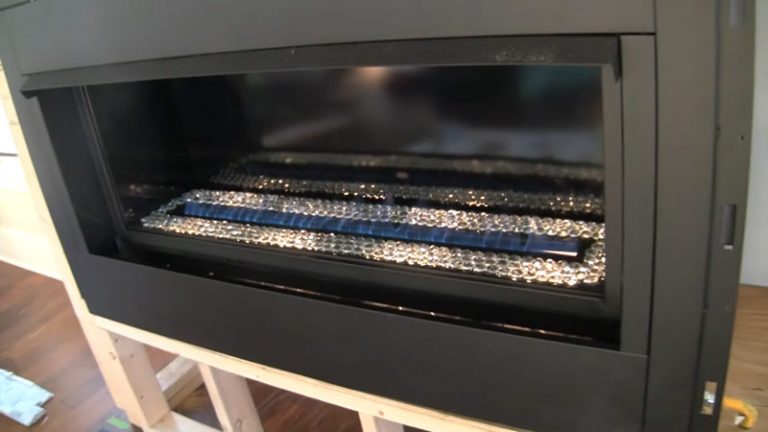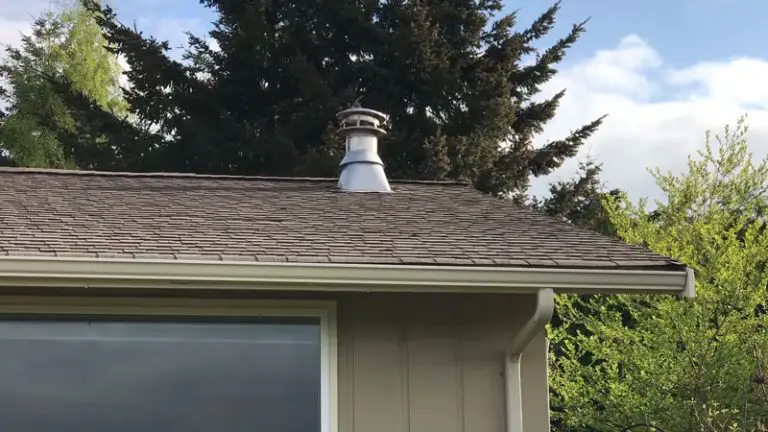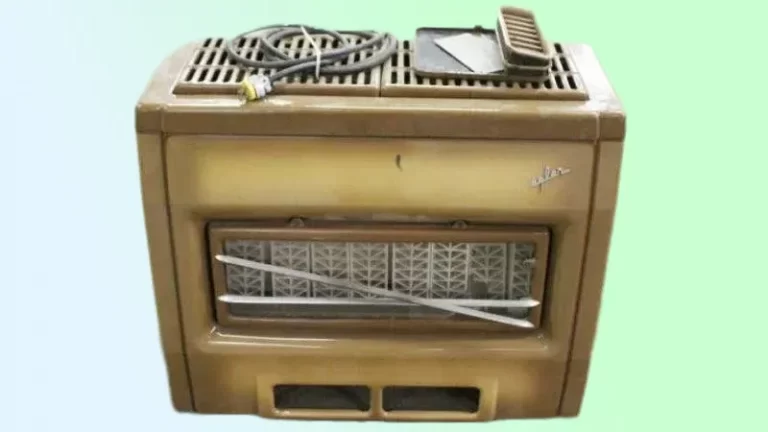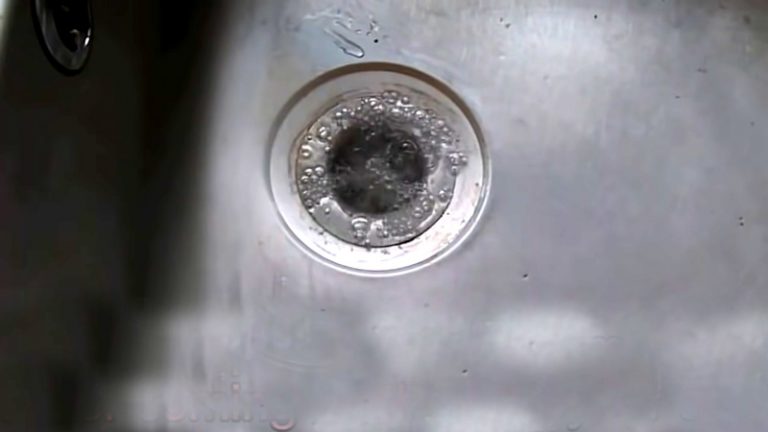How Can You Tell If A Propane Tank Is Empty Without A Gauge
We don’t have gauge with all propane tanks. Sometimes they come without gauge. But you have to know is the propane tank empty or not. There are few ways to know this.
You can measure the weight of the tank to find if it is empty. Also, using water you can find that. That said, you can also make an estimation of the gas remaining.
In this article, we’re going to discuss the methods so that you can determine if a propane tank is empty or not. Let’s get started.
You'll Learn About
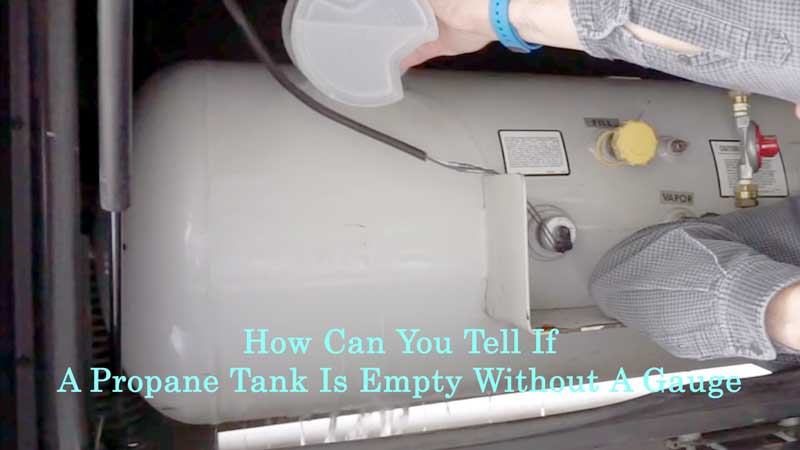
The Gauge on a Propane Tank
If you have a propane tank, you will need to know where the gauge is located. This is a device that tells you how much fuel is left in the tank. The things are described below:
What does the Gauge do?
The gauge on a propane tank will show the amount of propane remaining in the tank, as well as how full it is. It will also indicate how much fuel has been put into the tank and what percentage of that gas is Propane.
Tanks are made to be filled up to their maximum capacity, not just have a certain number of gallons left in them. If you’re trying to figure out if your tank is at its maximum capacity, you can look for an “E” or “M” on the side of the tanks near where they connect to hoses or connectors (for example E-13 M-60).
These letters represent either imperial or metric measurements, respectively – so make sure you know which one your country uses before filling up.
Numbers on Gauges
Numbers on gauges can indicate how many percentage of the tank capacity is left in the tank; they may also show how much liquid is present inside it (in terms of percentage). For example, if a 20-pound propane tank is half full, the gauge would likely read around 50%, indicating that about 10 pounds of propane remain, not necessarily 10 gallons.
Read Labels Carefully
Do not fill up your propane tanks until they reach their maximum capacity unless you know for sure that’s what’s required by law – otherwise, you could end up with too much gas and create dangerous explosions.
Always read labels carefully when purchasing any type of product – especially when it comes to gases like propane.
How to Tell a propane Tank is Empty
Propane tanks are designed to hold a certain amount of propane in them. If your tank is empty or near empty, you’ll be able to use the propane that’s left in it, but it won’t be enough to run any appliance that needs propane, including your stove, oven, refrigerator, or water heater. A propane tank is typically filled up when it’s full and needs to be emptied.
There are many methods of telling a propane tank is empty. Let’s discuss them:
Measure the Weight of the Propane Tank
To determine how full your propane tank is, you can weigh it on a scale and subtract the tare weight from its actual weight. The tare weight represents the empty condition of the tank and will be different depending on what type of fuel is in it—propane or natural gas.

You should check the tare weight before each fill-up to make sure that there’s never any liquid or gas left in the tank after dispensing the product into your appliances. If at any time you notice an increase or decrease in your propane tank’s overall mass, consult with a professional immediately as this could indicate potential problems with either the appliance being fueled by propane or with your home’s safety system related to Propane usage.
Always keep an eye on odors coming from your appliance; if they become overpowering, have them serviced right away. Be sure to replace worn parts such as hoses and couplings regularly – even if they seem like they’re doing their job properly -as these components can also add up to extra pounds over time and may eventually cause leakage.
Use Water to Estimate the Propane Level
To estimate the propane level in your tank, pour warm water down the side of the tank and run your hand down the outside of it. The tank will absorb heat from the water and feel cool where there is propane.

If you don’t see any gas escaping from a valve near the top of your tank, then it’s safe to assume that your propane level is low and you need to refill it. When refilling your propane tanks, always use fresh cold water instead of hot or ice-cold water because this will help keep fuel lines free from excessive pressure changes.
Check The Propane Tank Gauge
You can check the propane tank level by looking at the gauge on the front of the tank. The indicator will usually point to either red or green, depending on how much propane is left in the tank. If you see that there is not enough propane remaining in your tank, it’s important to fill it up as soon as possible before it runs out completely and causes an emergency situation.
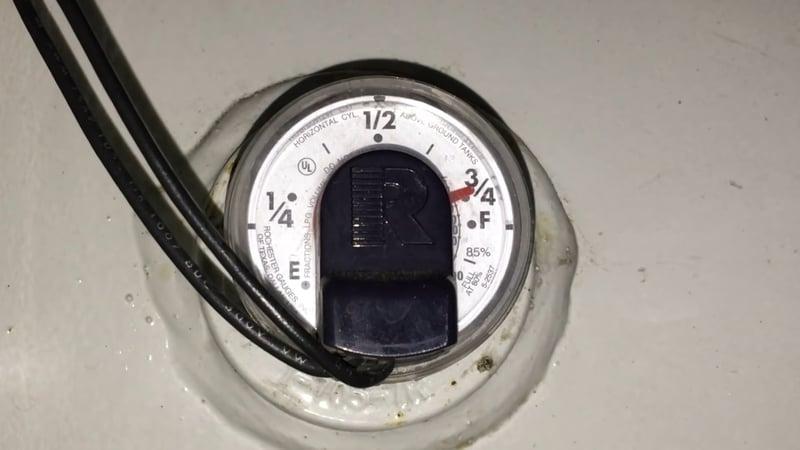
Refilling a 20-pounder should take around a few minutes while a 100-pounder may require a bit longer due to its size and weight differences. Always be sure to read your owner’s manual for specific instructions on refilling your particular type of gas container.
Avoid using open flame when filling up; use a butane lighter instead if available Make sure all connections are tight after refueling – this includes making sure both valves are fully closed Store tanks upright – leaning them against a wall can cause Leaks caused by condensation buildup.
How to Find the Propane Tank Valve?
The valves on your propane tank are pretty simple and straightforward, but there are a few things to bear in mind when using them.
- First, and the most important thing to know is that the valves are on the tank and not the propane line itself. The valves are designed to prevent the propane from flowing unintentionally through the valve when closed, and they are usually located on the top of the tank next to the cap.
- The valve you need to turn is the one that is on the top of the tank, and it is not the one on the end of the propane line. You can also check if the valve is working correctly by turning off the gas and setting the tap on the tank to the off position, and you should not be able to pull any propane out.
- Finally, if you have been using your propane tank for a while, you may notice that it shows low pressure on the inside of the tank. This is because the propane is flowing out of the tank at a lower pressure than is normal.
The valve regulates the pressure on the tank all the time, so if you notice that it is dropping, it could indicate low propane or another issue that needs to be changed.
How can you tell if a 100 lb propane tank is empty?
If you’re ever in a situation where you need to know if a 100 lb propane tank is empty, the best way to do so is by using an accurate weight. You can use something like a kitchen scale or even your phone’s digital balance app.
Just be sure not to exceed the weight limit for your tank.
Connect a New Line to Tank Before Checking Again
Before determining if a 100 lb propane tank is empty, make sure that all old propane lines are disconnected and replaced with new ones before checking again. The amount of propane left in a 100 lb tank will vary depending on how much was used.
Place Your Tank on the Scale
To determine if a 100 lb propane tank is empty, you will need to weigh it and subtract the tare weight from the number on the scale. If the result is close to the tare weight, then fuel is exhausted and it’s time to replace your tank.
Subtract Tare Weight from Number on Weight Scale
The amount of propane left in a 100lb tank will vary depending on how much was used. So be sure to account for any unused gas before checking again to see if your tank is still full.
For example, if the tare weight is 70lbs while the tank is 70lbs, the fuel you left is (70 – 70 = 0) lbs.
A full 100lbs tank holds about 23.6 gallons of propane. So, the remaining propane in a tank weighing 70lbs (which is the tare weight in this example) will be 0 lbs, meaning it's empty. If a tank weighs 120 lbs, then the propane weight is (120 - 70 = 50) lbs, which is about (50 / 4.2 = 11.9) gallons.
How do you tell if you’re out of propane in your house?
If you’re unsure whether or not your propane tank is full, check to see if the propane heater is on. If it’s off, confirm that the tank has been burnt off and look for damaged cables or hoses near the propane.
Never test for propane leaks with an open flame. If you suspect a leak, contact a qualified professional.
Check the Level of Propane in Home
To check the level of propane in your home, you first need to identify where the propane tank is located. Once you’ve located the tank, pour a cup of hot water down one side and then run your hand along the side until you find a cool spot.
Next, look at how much water was poured into the tank- this will give you an idea of how much propane is left in it. This method is best suited for smaller, portable propane tanks. For larger, residential tanks, check the built-in gauge. If there’s not enough propane remaining to allow for proper safety precautions (such as turning off all appliances), then it may be time to refill the tank or replace it altogether.
Propane Tanks without Gauges
Some propane tanks don’t have gauges to show how much fuel is left. This is because these tanks use a digital readout system that sends the information to a receiver in the tank.
If there’s an emergency, you won’t be able to see or hear the alarm indicating that your tank is low on gas.
Gauges Are Ineffective
While not always perfectly precise, gauges can provide a useful indication of the fuel level in a propane tank.
The gauge reads the tank’s pressure relative to atmospheric pressure, which isn’t always accurate. This issue may lead to confusion and incorrect decisions when using your propane tanks.
Tank Pressure Is Relative, Not Direct
The amount of gas that is inside a propane tank is not directly proportional to its pressure reading on the gauge. For example, if you have a 50-gallon propane tank with an airtight lid and the gauge shows 25 pounds of pressure, this means that there is approximately twice as much gas (50 gallons x 2 = 100 gallons) as what is actually present in the tank.
There’s No Good Way To Measure Tank Pressure
Standard pressure gauges are used to measure propane tank pressure without special equipment or knowledge about how refineries work. Without knowing exactly how much gas is inside each container, gauging fuel levels becomes difficult and inaccurate over time.
Gauges May Be Falsely Accurate
Gauges may be affected by temperature, but they generally provide a reasonable estimate of the propane level. While atmospheric pressure can have a minor influence, it is not the primary cause of potential inaccuracies. Atmospheric pressure fluctuates constantly throughout day and night so any given reading could be wildly different from another at any given moment – making it unreliable for gauging fuel levels accurately over time.
To Recap
You can easily tell if a tank is empty or not weighing the tank or using water. But for safety, whenever working with propane tank, bare in mind that you should be careful.
Frequently Asked Questions
How Do You Seal Black Gas Pipes?
You can use Teflon tape or Pipe Joint to seal black gas pipes effitiently. The Pipe Joint is a widely used sealant for black gas pipe. The Pipe Joint is a semi-permanent, high-strength, tape-like sealant.
How Long Does Teflon Tape Last?
Teflon tape can last for a varying amount of time, depending on the application and environment.
Do I Need to Use a Teflon Tape When Installing Black Gas Pipes?
Yes, you do. Teflon tape is a superior sealing agent. It’s used to seal a variety of pipe types.

